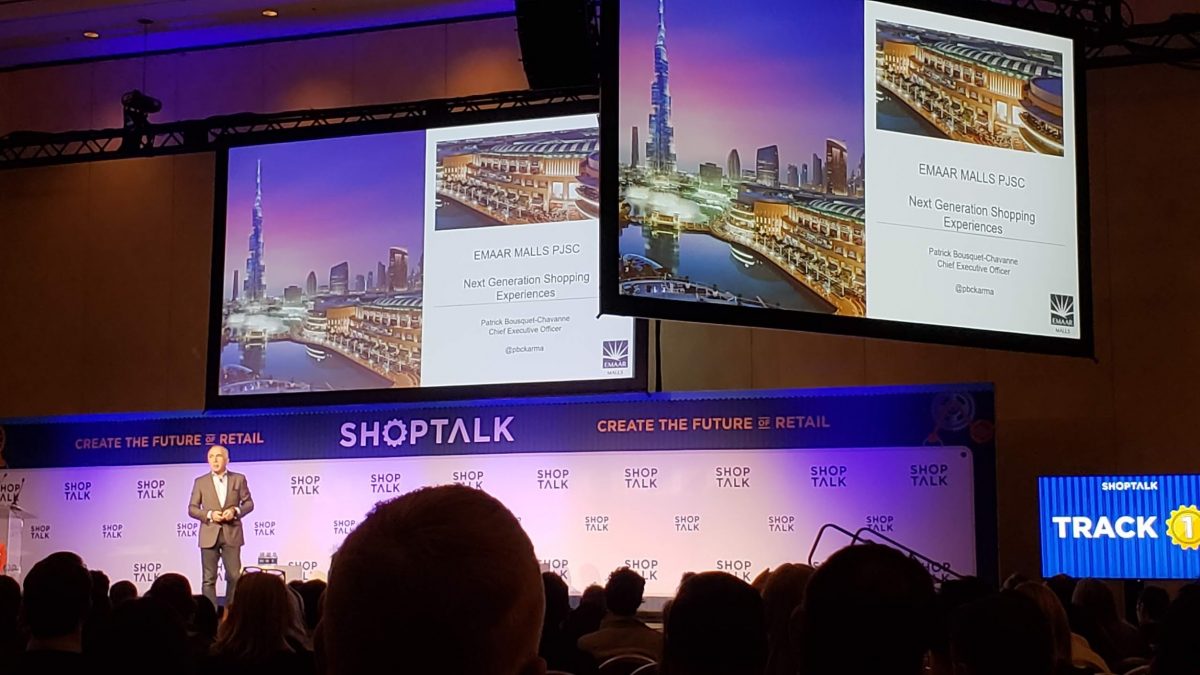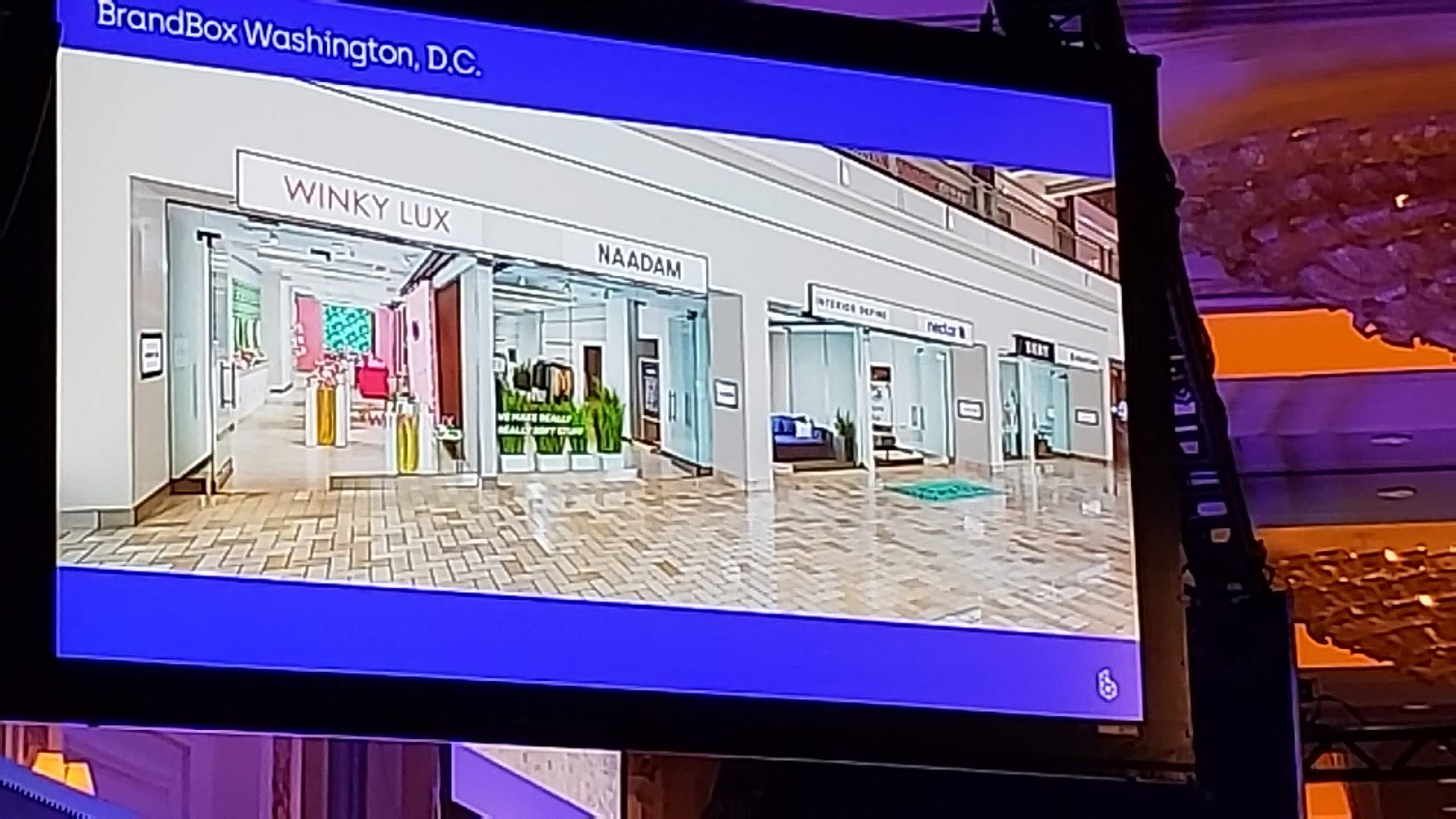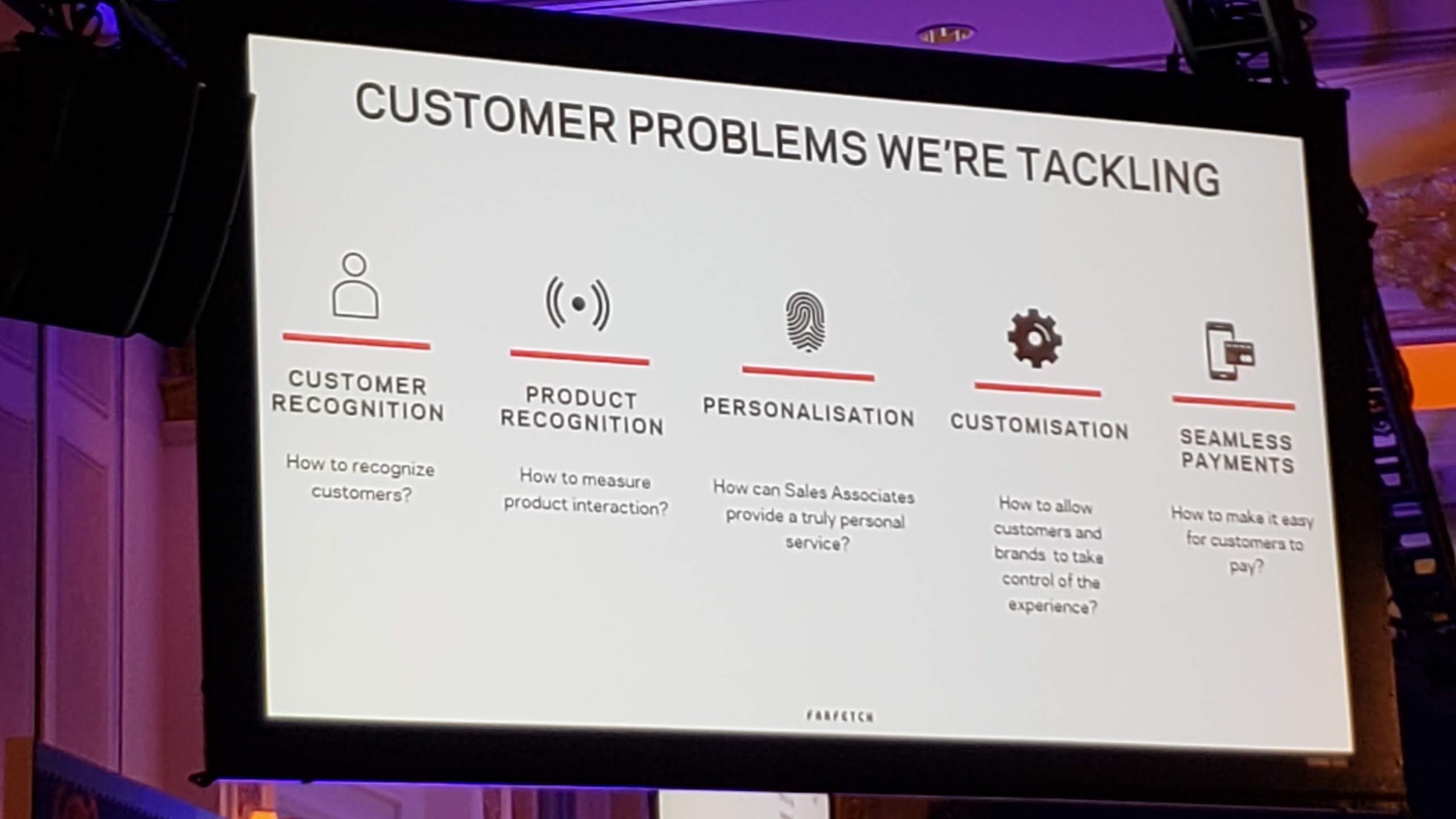
Shoptalk Day 2 Impressions – New Retail Is All About Personalization
March 7, 2019 by Dave Haynes
If there was a broad theme I could pick up from two days of listening to various retail operators and investors, and wandering the exhibit hall of Shoptalk, it was personalization.
Just about anyone I heard spoke about a need for retailers to create a shopping experience that was more relevant and personal to each buyer. Retail marketing was shifting, I heard, from one marketing message aimed at millions of consumers to millions of personalized messages, ideally tailored to the place, moment and persona (or individual).
Who, another presenter said, is going to require what product, and then why and when?
Jana Eggers, the CEO of a “synaptic intelligence” company called Nara Logics, says relevance is incredibly important now, and something that online can fail on. While online marketing masters like Google and Amazon are spookily accurate on what is interesting specific consumers, some retailers just aren’t there.
She related buying a set of spoons from Williams Sonoma and then getting pitched by email to pair up those nice new spoons with a jar of pot roast sauce.
???
Makes no sense, and that’s why personalization is is valuable.
Consumers, she told the crowd, are searching on best. That’s evident in web searches, when people Google the best Thai food in Austin or the best snow throwers for winter. “People are standing in the aisles of stores,” says Eggers, “trying to figure out ‘What is right for me?'”
One of the reasons I went to ShopTalk was to hear top retail people talk about and define experience, particularly as it relates to in-store technology.
But one hell of a lot of what I heard was about online, and how much of retail was going that way.
I did hear about how a lot of digital native retailers – the Warby Parkers of the world – were opening bricks and mortar spaces out of business necessity, because online sales were saturated for them and they needed to find new ways to generate revenue. They also wanted to create physical presences that generated buzz and boosted both online and offline sales.
Interestingly, a set of VCs during one session mentioned how opening a physical store tended to boost online sales in that geographic area.
The only presentation I saw of any substance, around putting “customer engagement” technology into stores, was a commercial real estate operator called Macerich, which is building highly flexible retail spaces in its malls. The Brandbox concept is squarely aimed at start-up retailers who want bricks and mortar spaces but don’t have any depth of experience in all the things associated with running physical stores.
Macerich has 47 “premium properties” in the US, and Brandbox is something of a lab project that comes out of the company talking to dozens of start-up and digital native brands.
The concept has a malleable base design with flexible fixtures and footprints, so that an apparel store can set things up one way while a beauty brand can use the same space and fixturing in a different way. It’s a bit like website themes – with different templates for different needs, but running off a foundational structure and design.

An optional tech package can include things like interactive and endless aisle displays, high-bright window displays, electronic shelf labels and other, similar tech.

Another company – Farfetch – spoke about how its fashioned-focused “operating system” for online retailers was now getting into physical retail, with analytics-driven stores of the future.
I saw some interesting presentations around visual search, notably one from a company called Syte. It was really smartphone based, but somebody clever would come up with a way to apply this to in-store digital. The nuts and bolts of it are the ability to take a screenshot of something – like a dress – and do an image search look-up that will pop a carousel of images of similar-looking dresses.
My mind was a wee bit blown by a rapid-fire presentation by a company called Orbital Insight that uses satellite photos and other data like cellular phone activity to build archival and near real-time “geospatial analytics” on retail activity and opportunities.
James Crawford, the company’s CEO and founder, rattled off how his platform gives retailers and commercial real estate people daily traffic analytics, derived from satellite imagery analysis on more than 260,000 parking lots. So, for example, if an outlet mall does a refresh or changes a major tenant the company can deliver insights on what that did for the numbers of shoppers coming to that mall, based on how full the lot is, then versus now.
One of the sessions I made a point of attending was a presentation and then interview with Patrick Bousquet-Chavanne, the CEO of Emaar Malls, which runs the Dubai Mall and several other primo mall properties in the UAE. He calls his properties platforms, because he believes the term mall is polarizing.
The vast Dubai Mall attracts 84 million people annually and a big driver of all that traffic is delivering experience. The mall hosted 642 branded events in 2018 – pulling people in for reasons other than just shopping and getting out of the blast furnace heat of that region.
He was asked if experience was critical for North American mall operators to prosper, and replied that if those companies didn’t reinvent themselves, they were going to be in even more trouble. That doesn’t mean they need indoor ski hills or giant aquariums, or amusement parks like what is in the Mall of America. But Bousquet-Chavanne said operators, and retailers generally, have to give consumers reasons to come in and engage with them.
Retailers need to focus on their customers, and what experience means, he says. And they have to stop getting fixated on novelty technology.
“Everyone gets excited about AR and VR, but I get excited about HR,” says Bousquet-Chavanne. “It’s about the humans that you build experiences for.”
In several talks I sat in on, people talked about Peleton, and how that company reflected the way brands and retail was going. Logically, they said, it wouldn’t make sense that a company trying to market a $2,000 exercise bike – when people could buy exercise bikes at Costco for a fraction of that – was going to get anywhere.
But the design, experience and community that Peleton has created is killing it, and startups that get the mix right with whatever they’re focused on will thrive – whether that’s exercise equipment or some other category that has been sold and marketed the same way forever.
“Pretty much all of these categories will be reinvented,” says Aileen Lee, a VC who runs Cowboy Ventures, who will spend the rest of her life ID’d as the person who started applying the term unicorn to unique companies.
I am back from ShopTalk now. I’m glad I went and saw it, walked it and learned. Not sure, however, it is something I need to attend regularly, in the context of 16:9. Particularly as a lot of the retail lexicon and ecosystem escapes me. But maybe I have a retail correspondent attend and report back.
For such a young show (I think this was only the 4th), it is mindbogglingly busy and well organized. Next year, and the year after, it is in late March again, likely just a week ahead of DSE. So going would mean either two back to back trips to Vegas, or one extended stay. The show is also moving from the Venetian and Sands complex, which was and is awesome, way south to the Mandalay Bay, which hugely reduces the number of hotels within walking distance. It is a serious hump just going from the Mandalay casino back to its meeting facilities.
Las Vegas, if you are looking ahead to DSE, is warming up. I dodged a couple of success snowstorms and spent three days in 20 degrees C, which was lovely. Should be that or warmer in two weeks.



Leave a comment